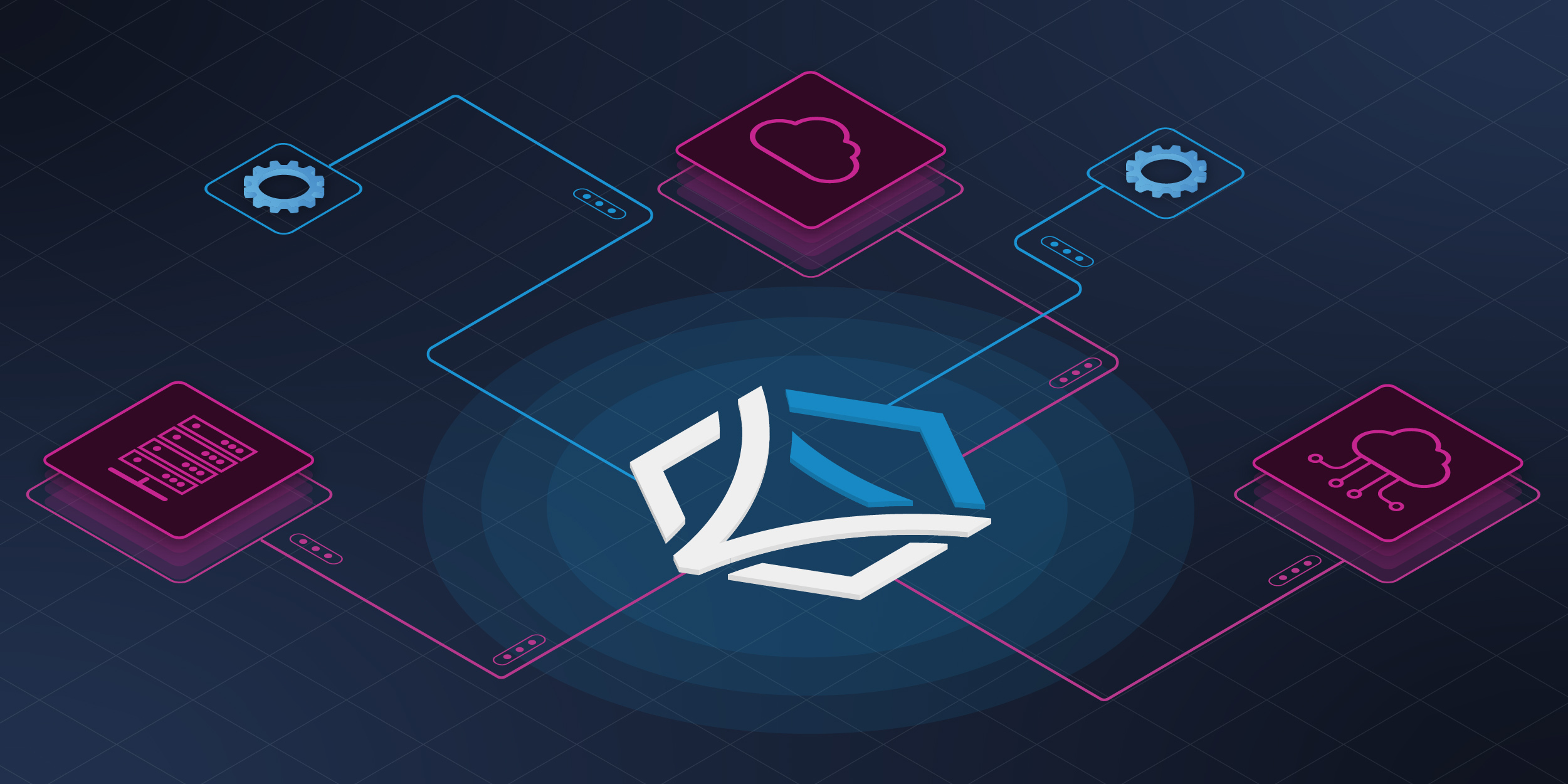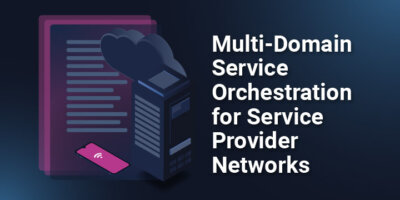Demand for network automation and orchestration continues to rise as organizations reap the business and technical benefits it brings to their operations, including significant improvements in productivity, cost reduction, and efficiency.
As a result, many organizations are now looking to the next wave of network orchestration: orchestration across technology domains, more commonly known as Multi-Domain Service Orchestration (MDSO).
Early adopters have learned that effectively leveraging automation and orchestration at the domain level doesn’t necessarily translate to the MDSO layer due to the different capabilities required to effectively coordinate and communicate across different technologies. While the potential benefits of MDSO are high, organizations must tackle unique challenges in multidomain deployments.
When orchestrating across domains versus within specific domains, the most obvious difference is the need to design around the direction your network data will travel.
Within a single domain, the activities are primarily focused north to south and vice versa. Instructions are sent to the domain controller, which executes the changes to the network functions. This makes single-domain orchestration relatively straightforward.
However, when you start orchestrating across domains, things get a little more complex. Now you need to account for both north/south activities and also for a large amount of east/west transactions, including interactions with inventory systems, service assurance systems, order systems, ticketing systems, etc. This places new demands on the orchestration environment for flexibility and the capability to interact with other systems and data formats.
A Change in Thinking
MDSO also requires a change in thinking about your availability models. Instead of focusing solely on server availability — which is the primary concern when you’re orchestrating within a domain — network teams also need to focus on service availability.
In other words, what system, or group of systems, within the multiple domains will ultimately affect service availability and the speed of orchestration? The team should perform a systems analysis and develop mitigation strategies during the planning stage, designing for the availability of the server but also being realistic about what the availability of the orchestration service will be.
When designing an orchestration solution across multiple domains, network teams also need to be aware that the more systems with which they integrate, the more dependencies they’ll need to consider, including dependencies that can be outside their or their vendors’ control — such as those managed by a third party. This will have a material effect on service levels and service availability and should be a factor to include in negotiations with those third parties.
The ability to perform MDSO is also dependent on good data and multiple sources of truth. A design built around distributed sources of truth is critical due to the existence of multiple controllers, legacy systems, cloud environments, etc.
It’s important to bear in mind: you don’t need to design for a perfect solution that provides 100 percent automation coverage from the start. Trying to do that will cost more in lost time than automation could ever save. Instead, focus on the end state and the overall goals for your orchestration solution. Start with what you know, put something into production, and then measure the results so you can learn and pivot as you go. You can always optimize later.
And think modular. A modular MDSO solution design provides greater flexibility and the opportunity to develop new kinds of combinatory services, delivering a variety of benefits and functionality.
Also, remember, MDSO doesn’t equal manual orchestration converted into code. Systems operate in different ways than people do. Revisit your existing processes and reimagine them based on computer-centric thinking when planning your MDSO solution.
How Itential Helps Successfully Implement MDSO
Working with the right partner can make the transition to MDSO much easier and more effective.
Itential’s approach to automation and orchestration is helping organizations successfully implement MDSO. Through the Itential Automation Platform (IAP), we’ve executed more than 5 billion automation and orchestration flows across a diverse set of networking domains for enterprises and service providers across multiple verticals, including telecommunications, financial services, managed services, the public sector, and more.
The Itential Automation Platform is a network automation and orchestration platform offered as a service or as an on premises solution. Designed from inception to be vendor- and technology-agnostic, Itential supports a wide range of The platform integrates with network control systems via API, allowing a user to manage any number of different network systems and technologies from a unified orchestration layer. Automations and orchestrations can be built with no code required, allowing non-developers to build automations for their specific domain of expertise. Plus, automated network processes can be exposed via API as services for consumption, enabling self-service for end users. All of this contributes to a platform that takes a highly scalable approach to multi-domain networking.
When Lumen was looking for a way to provision services faster across an increasingly complex network, and to unify their internal processes, customer purchase workflows, and disparate networking products, they turned to Itential.
Using Itential’s platform, Lumen is able to orchestrate functions across its multiple network domains, such as SD-WAN, optical, IP, data center, and edge. Lumen’s MDSO solution integrates with the control systems for each of its separate networks and with more than 50 unique systems and network technologies, providing end-to-end visibility and management, and streamlining and accelerating how they deliver services to their customers.
As a result, the company was able to automate more than 200 million processes, reduce customer activation times by 70%, reduce the time to route an order from 40 days to one, and reduce the time from ordering to provisioning a VPN service from more than two weeks to two days. Itential’s technology has made it possible for Lumen’s customers to leverage their application and data delivery platform in a way that best suits their individual needs.
You can read the full Lumen story here.
Taking the Next Step
When addressing large-scale MDSO challenges, network teams should keep a few things in mind:
- Think end state while building incrementally.
- Remember that MDSO doesn’t equal manual orchestration converted into code.
- Build a modular solution around multiple sources of truth.
- Don’t try to build everything upfront or have 100 percent automation coverage all at once.
- Focus on what brings the most business value to your organization and learn from the implementation process.
Orchestrating across multiple domains can be challenging, but the benefits to an organization’s operations and business results are worth the effort.
Learn more about what makes Itential a leader in MDSO in ACG Research’s latest report here.
Article originally written for The New Stack.





